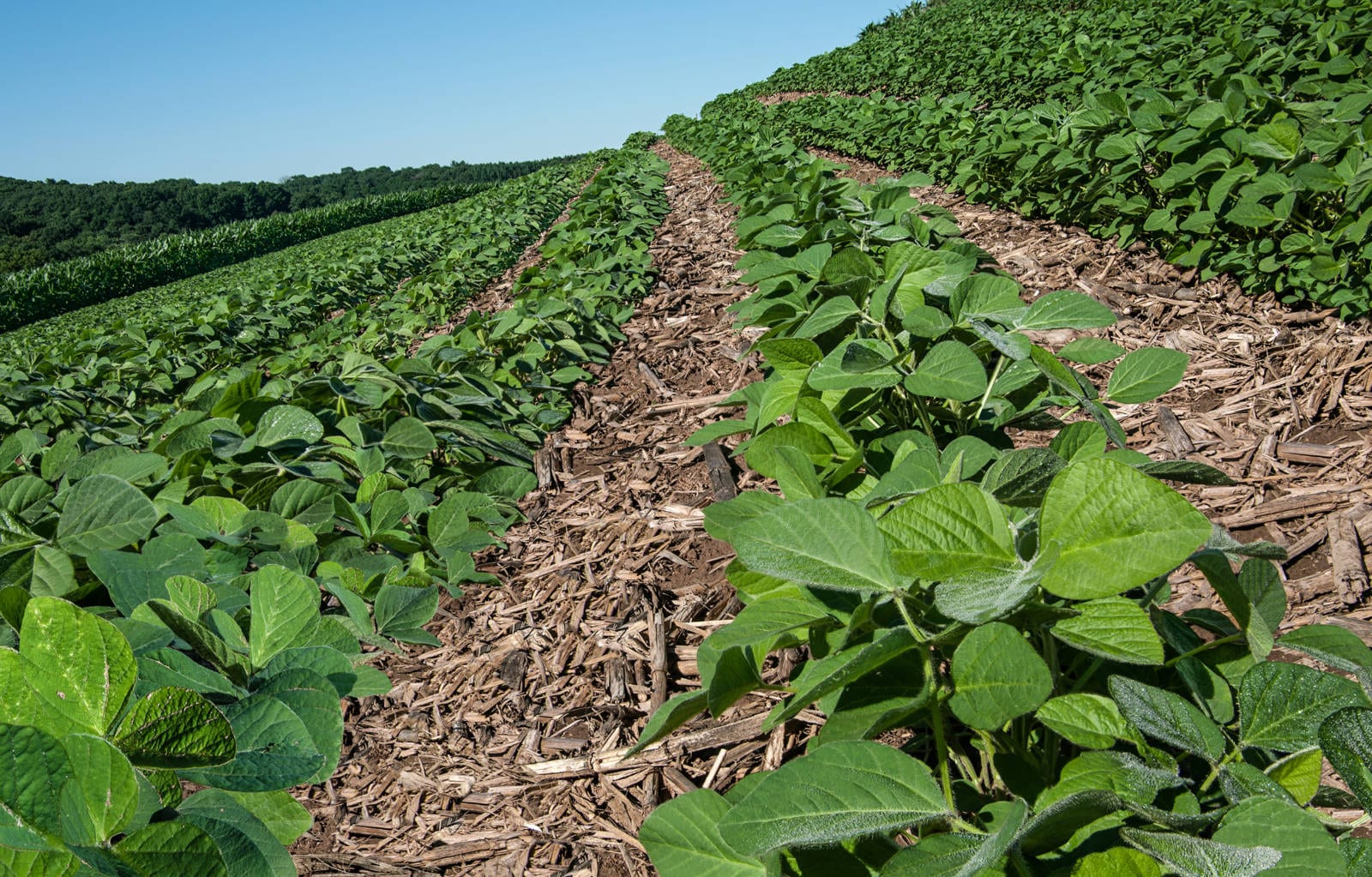Ask United States soybean farmers about crop rotation, and they will likely tell you it is one of many tools they use on their farms each season to improve soil conditions and increase yields. Rotating crops is as simple as switching fields of corn and soybeans each year, as well as mixing in other crops or cover crops. The practice prevents soil depletion by one crop. Corn for instance, takes nitrogen out of the soil, while soybeans add it back in. Switching between the two crops keeps the soil balanced and healthy.
Nearly all farmers rotate the crops to benefit their operations: Ninety-four percentof soybean hectares in the U.S. are continuously rotated.1Alabama farmer Annie Deeuses crop rotation on her farm to leave her land better than she found it. Kayla Hamilton, a farmer from Texas, shares that mixing cover crops into her rotation helps her farm with moisture retention, preventing erosion (or the runoff of soil with rainwater) and pest control.
I’ve found use of crop rotation on my farms has been very effective in several areas. Nutrient accumulation from nitrogen fixation in soybeans has reduced the amount of commercially produced fertilizers that I have to use in the following year’s corn crop and potash retention from wheat straw in rotations that include wheat have both had positive effects. Also, pest control is a big advantage of rotations with particular respect to insect and crop disease host elimination. One of the other areas I’ve found crop rotations help in is allowing for a larger variety of herbicides to use in various crops which allows me to change modes of action and thereby slow down development of weed herbicide resistance. All of these advantages plus the improvements to soil health make crop rotation one of the most beneficial, simple, and low-cost tools we can use on our farms.
While the yield and sustainability implications of crop rotation have long been known, researchers at the University of Illinois College of Agricultural Consumer and Environmental Sciences (ACES) have released new research on how crop rotation affect greenhouse gas emissions as well. The team studied greenhouse gas emissions and yield from fields that had been maintained as continuous soybean, rotated corn-soybean, or rotated corn-soybean-wheat, under tillage and no-till management for 20 years.
ACES scientists determined that crop rotating with corn and soybeans reduced nitrous oxide emissions 35 percent. Nitrous oxide is a byproduct of the process of denitrification, or when the bacteria in the soil break nitrates down into inert nitrogen gas. That inert nitrogen has a global warming potential almost 300 times higher than carbon dioxide. Typically, soybeans are not fertilized and don’t add to nitrous oxide emissions.
In addition to nitrous oxide reduction, the study also found that crop rotation produced an average yield benefit of more than 20 percent.
